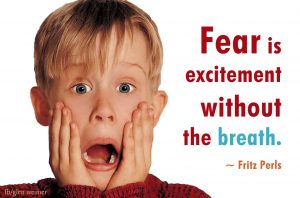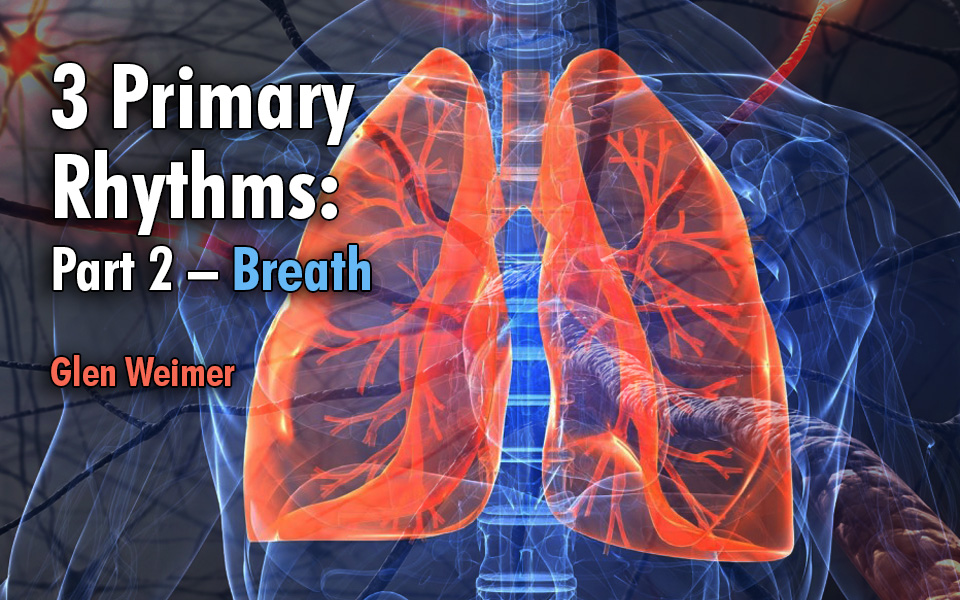Please note: this is the second installment of a 4-part blog. (see Part 1)
The Breath
Even though it is the last of our 3-Primary Rhythms to ‘come on-line’, I’m starting with the breath because it is the one we have the most conscious control over and thereby can most easily access for self-healing.
The lungs oxygenate the blood and subsequently every tissue in the body. And as any yogi will tell you, the free “breathing” of every part of the body in rhythm with the respiration of the lungs will create greater flexibility and strength in each of the organs and throughout the structure. Increase the respiration through deep breathing, ‘pranayama’, and you’ve increased the energy—oxygenating the tissues which creates a more negatively charged or alkaline pH environment for the cells thereby reducing inflammation and increasing flexibility.
“Breath is the bridge which connects life to consciousness,
which unites your body to your thoughts.” ~ Thích Nhất Hạnh
Overwhelm
 Emotionally overwhelming experiences cause us to hold the breath of our lungs but also the “breathing patterns” in specific areas of the body and tissues/organs associated with what is overwhelming to us. Something we can’t bare to see may affect the eyes and face; shouldering huge responsibility—the upper thoracics, shoulder girdle, and neck; heartbreak can cause constrictions in the chest; feeling like you’re having your arm twisted to coerce your compliance can affect the shoulder girdle; and so on. The metaphorical language we use actually describes a felt sense that our bodies are recording in our tissues.[1]
Emotionally overwhelming experiences cause us to hold the breath of our lungs but also the “breathing patterns” in specific areas of the body and tissues/organs associated with what is overwhelming to us. Something we can’t bare to see may affect the eyes and face; shouldering huge responsibility—the upper thoracics, shoulder girdle, and neck; heartbreak can cause constrictions in the chest; feeling like you’re having your arm twisted to coerce your compliance can affect the shoulder girdle; and so on. The metaphorical language we use actually describes a felt sense that our bodies are recording in our tissues.[1]
Freeing the Breath
When I’m doing bodywork, one of the things I’m observing is how freely all the tissues of the body “breathe” and where there are restrictions in that expansion and contraction breath. I’ll often gently rock the body, passing a fluid-wave through the whole tissue field to see where it hits up against a barrier. Through dialogue and hands-on manipulation, I’ll work with the consciousness in the tissues to see how this barrier to motion wants to come back into relationship with the surrounding areas and whole system—literally getting more movement, blood, and nutrients into those cells. I may gently hold that area in an even deeper contraction, possibly intensifying the holding within a larger area until the system can recognize how it has been frozen. When I release my hold, the whole area begins to “breathe” often for the first time in decades. Toxic waste can get flushed from the cells and nutrients come back to those tissues for self-healing.
BREATHING EXPLORATION:
We can work with this ourselves. Try this simple breathing exercise while lying down with your eyes closed. Bring your awareness to your breath as it enters and leaves your body. Now just notice what moves and what doesn’t. You may begin with the obvious, but the longer you pay attention, section by section, you’ll notice a wave of movement that carries throughout the body. There may be tightness, discomfort, or even pain in areas that don’t move. Slowly begin to deepen your breathing which may make this even more obvious. Now use the deep Out-Breath to accentuate a contraction in the area that is most stuck or painful. Hold all the breath out and the contraction for a slow count of 5 to 7. Then relax and expand the area on the deep In-Breath. Repeat this contraction/relaxation for several cycles, approximately 2 to 5 minutes. Then resume normal breathing. You may notice more movement and less pain from just this brief exercise.
REMEMBER: ALWAYS LISTEN TO WHAT IS COMFORTABLE FOR YOUR BODY!
Continue reading. Go to 3 Primary Rhythms: Part 3 – Pulse
[1] Baum, Brent, The Healing Dimensions: Resolving Trauma in Body, Mind and Spirit (1997)
Disclaimer:
The information featured on this site is provided for information and education purposes only and is not intended to replace the advice of your doctor or health care provider on medical and/or health-related issues.
You should not use the information on this site for diagnosis or treatment of any health problem or as a substitute for medication or other treatment prescribed by your physician or health care provider.
Submit your review | |

